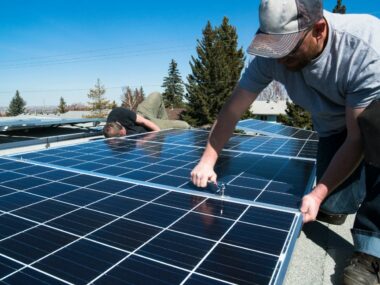Roof leaks are a common household issue that can lead to significant damage if not addressed promptly. Repairing these leaks without removing shingles can save you time, effort, and money. This guide will walk you through the process of identifying, repairing, and preventing roof leaks effectively. By the end of this article, you’ll be equipped with the knowledge to tackle roof leak repair confidently, maintaining the integrity of your home and ensuring longevity for your roof.
Identify Roof Leaks Before They Get Worse
Identifying a roof leak early can prevent further structural damage and costly repairs. Start by inspecting your ceiling for water stains or discoloration, which are often telltale signs of a leak. Check your attic for damp spots, mold, or any signs of moisture, as these are indicators that water is penetrating your roof. Regularly examining these areas can help you catch leaks before they escalate.
During your inspection, pay close attention to the exterior of your roof. Damaged, curled, or missing shingles can quickly turn into serious leaks if ignored. Granule loss on shingles indicates wear that could compromise your roof, and flashing around chimneys, vents, and skylights is a common entry point for water. Ignoring these signs can lead to costly damage, so it’s crucial to contact experts in roof leak repair in Vancouver, BC before the problem worsens.
Utilizing a garden hose to simulate rain can also help identify leaks. Have someone observe from inside your attic while you spray water on different sections of your roof. This method can reveal leaks that aren’t visible during regular inspections. By identifying the problem early, you can avoid extensive damage and maintain the structural integrity of your home.
Essential Tools and Materials for Roof Leak Repair
To effectively repair roof leaks without removing shingles, you’ll need a set of essential tools and materials. These items will not only simplify the repair process but also ensure a thorough and lasting fix. Here’s a list of what you’ll need:
- Sealant or Roofing Cement: A high-quality sealant can fill cracks and gaps, preventing water from seeping through.
- Putty Knife or Trowel: These tools are necessary for applying the sealant or cement smoothly and evenly.
- Caulking Gun: Useful for applying sealant in a controlled manner, ensuring precise application.
- Roofing Tape or Patches: Ideal for covering larger damaged areas without removing shingles.
- Safety Gear: This includes gloves, safety goggles, and a sturdy ladder to ensure your safety while working on the roof.
In addition to these tools, having a reliable flashlight and measuring tape can aid in assessing the leak’s size and ensuring you cover the affected area completely. A utility knife may be needed for trimming any excess materials.
Before beginning any repair work, ensure all tools and materials are within reach. This preparation will make the process more efficient and help avoid any interruptions. Investing in quality repair materials can make a significant difference in the durability and effectiveness of your repair efforts.
Preparing Your Roof Surface for a Quick Fix
Proper preparation of your roof surface is crucial for a successful repair. Start by thoroughly cleaning the area around the leak. Remove any debris, dirt, or loose granules from the shingles. This step is essential, as a clean surface ensures better adhesion of the repair materials.
Next, dry the affected area completely. Moisture can hinder the adhesion of sealants and patches, leading to ineffective repairs. If the weather conditions are damp, consider using a portable heater or heat gun to dry the area faster. Ensuring the surface is dry will significantly improve the effectiveness of your repair efforts.

Effective Repair Methods Without Removing Shingles
Repairing roof leaks without removing shingles can be accomplished using several effective methods. One popular technique is applying a roof sealant. Begin by identifying the source of the leak and applying a generous amount of sealant over the area using a caulking gun. Spread it evenly with a putty knife to ensure comprehensive coverage. This method is particularly useful for small cracks and gaps.
Another effective method is using roofing tape or patches. These materials are designed to adhere to your roof’s surface, creating a waterproof barrier over larger damaged areas. Measure the area that needs repair, cut the tape or patch to size, and firmly press it over the leak. Ensure there are no air bubbles or gaps in the repair to prevent water ingress.
For more severe leaks, consider applying a layer of roofing cement. This method involves spreading a thick layer of cement over the affected area, embedding a piece of roofing fabric into the cement, and then covering it with another layer of cement. This layered approach provides added protection and durability. By employing these methods, you can effectively repair leaks without the hassle of removing shingles, saving both time and money.
How to Test Your Roof Leak Repair for Success
Testing your repair is a critical step to ensure the leak has been adequately addressed. Begin by visually inspecting the repaired area. Look for signs of incomplete coverage, such as exposed gaps or uneven application of sealant or patches. Make any necessary adjustments to ensure the repair is thorough.
Next, conduct a water test to verify the effectiveness of the repair. Use a garden hose to simulate rain, directing the water flow over the repaired section for at least 15 minutes. Have someone inside the attic monitor for any signs of water infiltration. If no leaks are detected, the repair is successful. If you notice any water ingress, reassess the repair and make any necessary corrections.
Finally, monitor the repaired area over the next few weeks, especially after heavy rain or storms. This ongoing observation can confirm the long-term success of your repair efforts. By thoroughly testing your repair, you ensure the problem is resolved, protecting your home from future damage.
Tips for Preventing Future Roof Leaks
Preventing future roof leaks involves regular maintenance and proactive measures. Start by scheduling routine inspections of your roof. Examine the condition of shingles, flashing, and gutters. Early detection of minor issues can prevent them from developing into significant problems.
Keep your gutters clean and free of debris. Clogged gutters can lead to water pooling on the roof, increasing the likelihood of leaks. Regularly removing leaves and other debris ensures proper water drainage and reduces stress on your roof.
Consider applying a protective sealant to your roof every few years. This additional layer of protection can extend the life of your shingles and prevent water from penetrating the surface. By incorporating these preventive measures, you can maintain a leak-free roof and extend its lifespan significantly.
When It’s Time to Call a Professional Roofer
While DIY repairs can be effective for minor leaks, there are times when professional assistance is necessary. If you encounter a leak that you can’t locate or if the damage is extensive, it’s advisable to consult a professional roofer. They have the expertise and tools to diagnose and address complex issues.
Additionally, if your roof is older or has suffered significant storm damage, professional evaluation is crucial. They can assess the overall condition of your roof and recommend necessary repairs or replacements, ensuring your home remains protected.
Hiring a professional also ensures compliance with local building codes and safety standards. They can provide warranties on their work, offering peace of mind that the repair will be durable and long-lasting. By knowing when to seek professional help, you can prevent further damage and maintain the integrity of your home.
Summary
Repairing roof leaks without removing shingles is a practical solution that can save you time and money. By identifying leaks early, using the right tools and materials, and employing effective repair methods, you can address leaks efficiently. Testing your repairs and implementing preventive measures will ensure your roof remains leak-free. Remember, when in doubt, seek professional assistance to protect your investment. Now is the perfect time to assess your roof and take action. Don’t wait for the next rainy season. Begin your roof leak repair today and safeguard your home against future damage.






